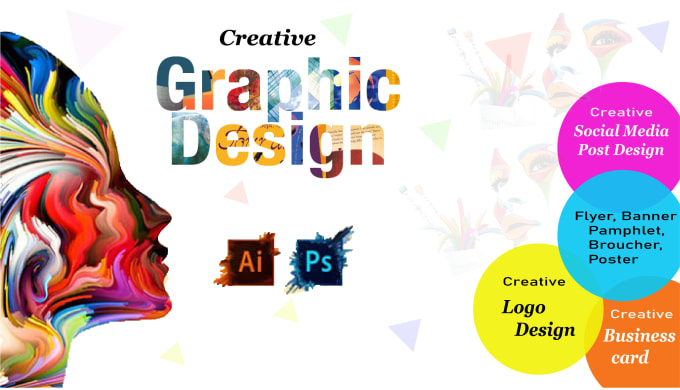Graphic Design

Graphic Design
Digitalgenx Digital Marketing
Graphic design is a dynamic and multifaceted field that seamlessly blends creativity, technology, and communication. At its core, it is the art of visual communication, where designers strategically craft visual elements to convey messages, evoke emotions, and enhance the overall user experience. In this comprehensive exploration, we’ll delve into the various aspects that define and characterize graphic design, its historical evolution, the tools employed, and its significance in contemporary society.
*Evolution of Graphic Design:*
The roots of graphic design trace back to ancient civilizations where visual symbols and imagery were used for communication. However, the formalization of graphic design as a discipline began during the Industrial Revolution, with the rise of mass production and the need for visually appealing advertising materials. The early 20th century saw the emergence of influential movements like Bauhaus and Art Deco, shaping the foundations of modern graphic design. As technology advanced, the transition from traditional methods to digital tools in the late 20th century marked a significant paradigm shift.
*Elements of Graphic Design:*
At its essence, graphic design comprises several key elements, each playing a vital role in creating a cohesive and impactful visual composition. Typography involves the selection and arrangement of fonts to convey written information effectively. Imagery encompasses the use of photos, illustrations, and icons, chosen and manipulated to communicate concepts and evoke emotions. Layout and composition involve arranging visual elements within a space to achieve balance, hierarchy, and readability. Color theory guides the use of colors to evoke specific emotions or convey particular meanings.
*Tools and Technology:*
The evolution of technology has revolutionized graphic design, providing designers with a plethora of sophisticated tools and software. Designers commonly use Adobe Creative Suite, including Photoshop for image editing, Illustrator for vector graphics, and InDesign for layout design. Additionally, 3D modeling software and animation tools contribute to the expanding scope of graphic design, enabling designers to create immersive and dynamic visual experiences.
*Applications in Various Mediums:*
Graphic design finds application across diverse mediums, ranging from traditional print materials like brochures and posters to digital platforms such as websites, social media, and mobile apps. Each medium presents unique challenges and opportunities, requiring designers to adapt their skills to effectively communicate in different contexts. The versatility of graphic design ensures its relevance in industries such as marketing, branding, user interface (UI) and user experience (UX) design, and editorial design.
*Communication and Branding:*
Effective communication lies at the heart of graphic design. Through the thoughtful combination of visual elements, designers convey messages clearly and engage their target audience. In branding, graphic design plays a pivotal role in creating a visual identity that distinguishes a brand from its competitors. Logos, color schemes, and overall design aesthetics contribute to building a recognizable and memorable brand image.
*User Experience (UX) Design:*
In the digital age, the role of graphic design in enhancing user experiences has become increasingly crucial. UX design focuses on creating interfaces that are not only visually appealing but also intuitive and user-friendly. Graphic designers collaborate with UX designers to ensure that the visual elements align seamlessly with the overall user journey, enhancing the usability and overall satisfaction of digital products.
*Social and Cultural Impact:*
Graphic design has a profound impact on culture and society, influencing perceptions, attitudes, and behaviors. From political posters to iconic album covers, graphic design has played a pivotal role in shaping cultural movements and reflecting societal values. Designers have the power to challenge norms, provoke thought, and contribute to the cultural dialogue through their visual creations.
*Conclusion:*
In conclusion, graphic design is a dynamic and evolving discipline that transcends mere aesthetics. It is a powerful tool for communication, storytelling, and creating memorable experiences across various mediums. From its historical roots to its contemporary applications, graphic design continues to shape our visual landscape and influence the way we perceive and interact with the world. As technology advances and design trends evolve, the role of graphic design will undoubtedly continue to expand, contributing to the ever-changing tapestry of visual communication.